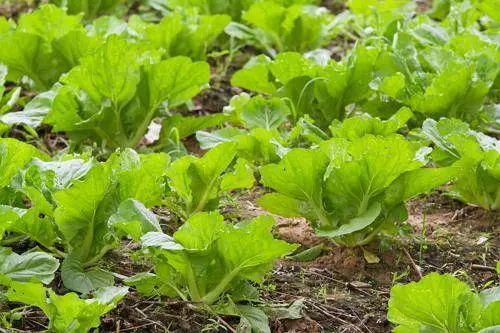Contents
In recent years, s have become interested in growing Chinese cabbage. This vegetable is not only tasty, but also healthy. He rarely lingers on store shelves. There are many varieties of Beijing cabbage, so their choice should be taken seriously.
The climatic conditions of the regions are diverse, so it is not always possible to get full-fledged heads of Beijing cabbage. Cabbage Bilko F1 is an interesting hybrid. Our readers will be presented with a description and some characteristics of the vegetable, as well as features of agricultural technology.
Description
The Beijing cabbage variety Bilko is a hybrid. You can verify this when buying seeds: the letter F1 is on the bag. The ripening period of the vegetable is medium early, you can cut the heads of cabbage 65-70 days after sowing the seeds in the ground or for seedlings.
The shape of the leaves is obovate, the color of the upper leaves is rich green. They are clearly visible blistering.
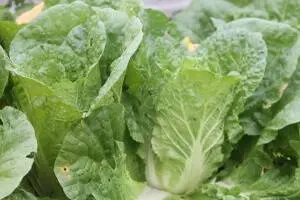
A head of Bilko variety grows up to two kilograms, it resembles a barrel. It is of medium density, tapering towards the top. The inner stalk is not long, so there is practically no waste after cleaning. In technical ripeness, the leaves on the head are whitish-yellow in the lower part, and light green on top. If the cabbage is cut in half, then the inside is yellowish, as in the photo below.
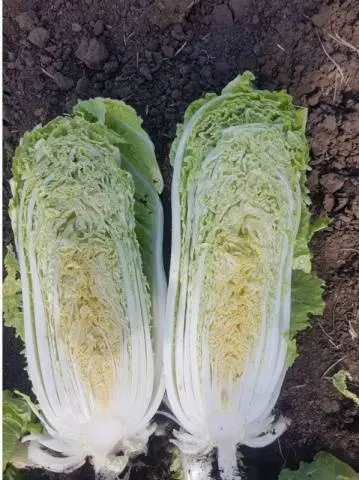
Characterization
- Chinese cabbage varieties Bilko has good taste.
- Gardeners are attracted by early ripening and the ability to grow vegetables in several streams. With late sowing, a small head of the Bilko variety has time to form. Heads spin well at low temperatures and short daylight hours.
- The Bilko variety is productive, as a rule, they collect from 5 to 7 kilograms per square meter.

- Cabbage Bilko is transportable, heads of cabbage are not opened, an impeccable presentation is preserved.
- Plants are rarely exposed to diseases from which representatives of the Cruciferous family suffer: clubroot, powdery mildew, slimy bacteriosis, fusarium.
- Bilko Pekinka is stored for almost four months in cool conditions.
- Loose heads of cabbage are used for making salads. In addition, Beijing cabbage is fermented and used to wrap cabbage rolls. Moreover, the leaves of Bilko F1 are much softer than those of a white vegetable.
- Pekinka Bilko propagates in a seedling and seedless way.
Of the shortcomings, one can be named – non-compliance with agricultural technology leads to the formation of arrows, which nullifies all efforts.
Features of the variety
Why do gardeners prefer to grow white cabbage on their personal subsidiary plots? The fact is that the Beijing head vegetable is not always possible. The reason is the mistakes made during cultivation. Let’s look at the biological characteristics of the variety.
One of the problems is coloring, here are some reasons for this phenomenon:
- Temperature mismatch. If at the beginning of growth the temperatures are low (less than +15 degrees) or, conversely, high, then instead of twisting the head, flowering arrows form on the Bilko cabbage.
- Damaged central root. That is why it is best to grow plants one at a time in cassettes or cups so that the cabbage root system is closed.
- Bilko is a short daylight plant. If daylight hours last more than 13 hours, then the vegetable tends to get “offspring”.
- The same problem occurs if Bilko’s Beijing cabbage is planted too densely. As a rule, it is necessary to maintain a step when sowing seeds from 10 to 20 cm. Then, after germination, the cabbage is pulled through, leaving at least 30 cm between the bushes, about 60 cm between the rows.

- Depleted soil also provokes the formation of an arrow, since the cabbage does not have enough nutrition. She strives to bloom faster and get seeds. After all, the root system of Beijing cabbage Bilko F1 is located close to the surface. That is why a place with fertile and loose soil is chosen for planting.
If you follow these rules, you can grow a good crop of healthy vegetables.
Terms of planting
As mentioned above, the formation of a head of cabbage on the Bilko variety depends on air temperature and daylight hours. Therefore, experienced gardeners grow Beijing cabbage in early spring or autumn.
The optimum temperature for Bilko cabbage is + 15-22 degrees. In spring, as a rule, there is a sharp drop in temperatures by 5 or even 10 degrees. This is a disaster for Beijing cabbage – shooting is inevitable.
In the fall, seedlings of Beijing Bilko cabbage are planted in the third decade of July and until August 10. It all depends on when the frosts start. Therefore, it is important to decide on the timing so that the heads of cabbage have time to form before the first frost. The Bilko variety can withstand temperatures down to -4 degrees without loss of crop.
Soil characteristics
Chinese cabbage Bilko F1 likes well-fertilized, slightly acidic soils with a high nitrogen content. This microelement is necessary for the growth of green mass by vegetables. Therefore, before planting cabbage in the ground, they add for each square meter:
- compost from 4 to 5 kg;
- dolomite flour 100 or 150 grams;
- wood ash up to 4 cups.
If you buy a vegetable from the store, be sure to soak it in cold water before cutting it for salad.
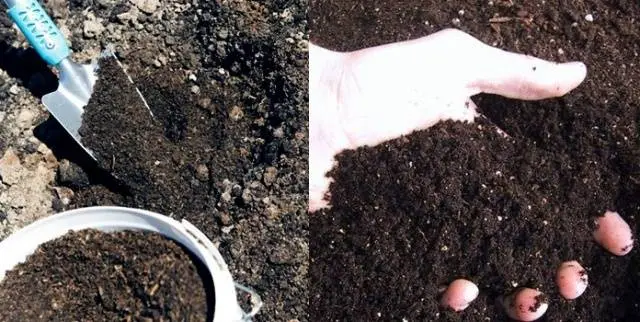
For sowing seeds or planting seedlings of cabbage of the Bilko variety, beds previously occupied by cucumbers, garlic, potatoes or onions are chosen. But after relatives of the Cruciferous family, cabbage is not planted, because they have not only common insect pests, but also diseases.
Agrotechnology and care
Regardless of how you propagate the Beijing vegetable, you should know that the seeds of the Dutch Bilko variety are not soaked before sowing. The fact is that they are treated with Tiram fungicide before packaging.
Growing seedlings
To obtain an early harvest of heads of Bilko F1 variety, a seedling method is used. Seeds are sown in April. Before planting, the soil is shed with boiling water, to which crystals of potassium permanganate are added. This is necessary to prevent cabbage diseases such as black leg.
From the description and characteristics of the Dutch Bilko variety, it is clear that plants with a closed root system take root without problems and quickly increase their green mass. That is why it is best to sow the seeds in individual cups or cassettes. If the sowing of cabbage seeds is carried out in a common container, then you will have to dive.
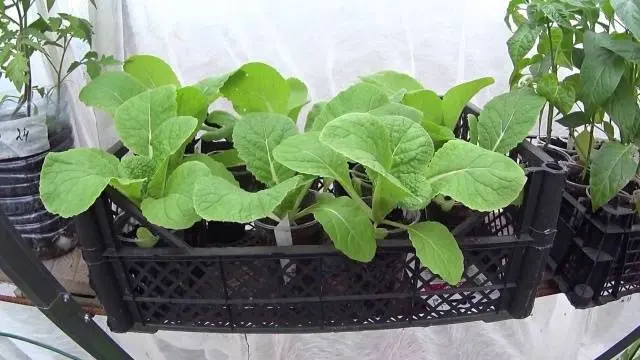
Close up the seeds to a depth of no more than half a centimeter. The containers are installed in a warm room, at a temperature of 20-24 degrees. The first sprouts of cabbage appear in 3-4 days. The air temperature is slightly reduced so that the seedlings of Beijing cabbage do not stretch out and expose the containers to a well-lit window.
Plants at the seedling development stage are watered, fertilized with urea or wood ash extract. Before planting in the ground, cabbage of the Bilko variety is taken out into the street or a balcony for hardening.
Landing in the ground
When 1 or 3 true leaves appear on the seedlings of Bilko F4 cabbage, it is planted in a permanent place. We have already talked about the planting pattern, it must be adhered to by all means, because thickened plantings can lead to flowering.
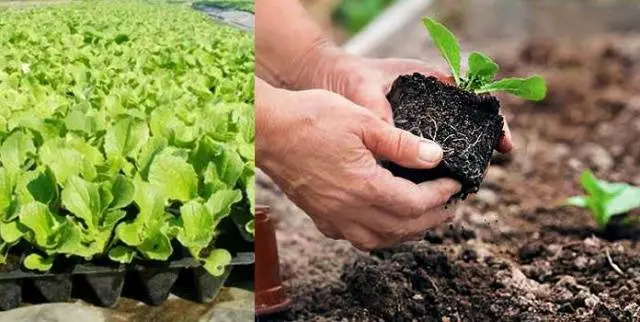
Seedlings are buried in the holes to the cotyledon leaves. During the growing season, weeds must be removed, because it is on them that pests and spores of diseases live.
Reproduction by seeds
As indicated in the description, Beijing Bilko cabbage can be grown by seedlings and direct sowing of seeds into the ground.
Sowing is carried out in fertile soil to a depth of half a centimeter. A distance of 5-10 cm is left between the grains in a row. The fact is that the germination of seeds is not always 100%. It is better to thin out later than to be left without cabbage. By the end of thinning, there should be at least 30 cm between plants.
Light correction
Chinese cabbage of the Bilko F1 variety forms a head of cabbage if the daylight hours last no more than 13 hours. Therefore, gardeners have to “shorten” the summer day. In the afternoon, experienced gardeners recommend throwing dark covering material on planting Bilko cabbage. In addition to protection from the sun, it can be used in early spring or late autumn to save plants from frost.
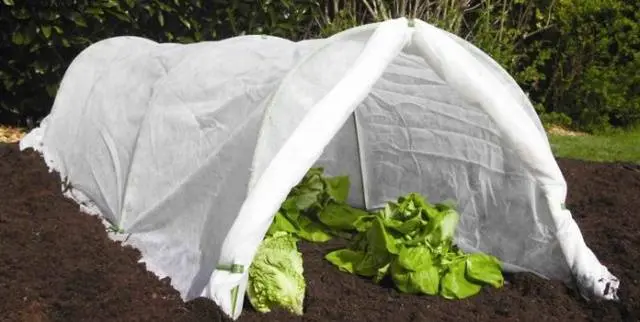
Watering and fertilizer
Beijing Bilko is a big lover of water. Drying of the soil should not be allowed, but the swamp in the garden should not be arranged. Water the plants with warm water under the root. To reduce watering, the soil around future heads of cabbage is mulched.
As a top dressing and protection of cabbage from pests, gardeners advise using wood ash. Every leaf and soil is abundantly powdered with it. You can make an extract from the ashes and spray the Bilko F1 variety.
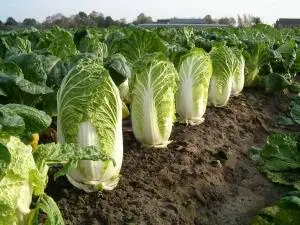
Protection against pests
Pesticides should not be used on cabbage during the growing season. It is necessary to manage with safe means in the fight against insects. We have already spoken about the ashes. In addition to it, you can use salt, dry mustard, red ground pepper (scatter over plants and on the ground). They repel many pests. As for slugs or caterpillars, they will have to be removed manually.
If the invasion of pests cannot be eliminated, special preparations based on biological components can be used.
cabbage on the window
Some s who do not have a land plot are wondering if it is possible to grow full-fledged heads of the Bilko F1 variety in an apartment. Let’s make them happy. The main advantage of growing a vegetable at home is getting fresh produce throughout the year.
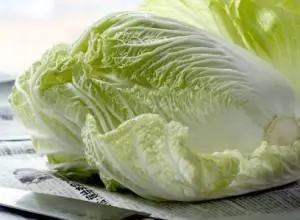
Let’s look at the features of agricultural technology:
- We are preparing fertile soil. You can use store-bought potting mix. Pour it into a container with a volume of at least 500 ml.
- We spill the soil with hot water, cool to room temperature.
- We make a small depression of 0,5 cm and sow 3 seeds in each container.
- Seedlings appear after 4 days. When the plants grow up, we select the strongest seedling, and remove the rest.
Caring for Beijing Bilko cabbage at home comes down to timely watering, top dressing, temperature and light control.
Beijing cabbage cultivation technology:
Conclusion
As you can see, observing the norms of agricultural technology, you can grow healthy Beijing cabbage. But the harvest must somehow be preserved.
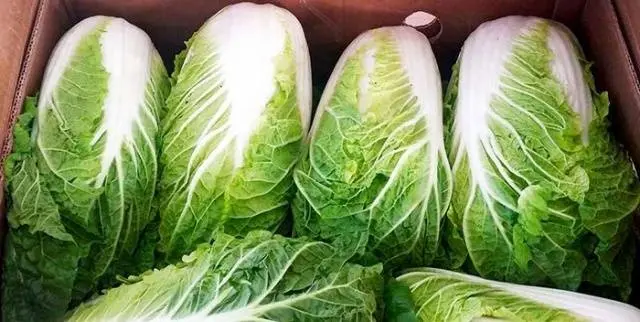
Some of the heads of cabbage can be fermented, and the rest can be put in the refrigerator or cellar. As indicated in the characteristics, the Bilko variety can be stored for up to four months under certain conditions.
We choose cabbage without damage, put it freely in boxes in one layer. We drop into the cellar. The vegetable is stored at a humidity of 95-98% and a temperature of 0 to +2 degrees. At higher rates, the vegetable begins to germinate.
If the air in the basement is dry, then it is necessary to put water next to the boxes.
Heads can be stored open or wrapped in cling film. It’s good to keep the heads in the freezer. They can stay there for up to three months.
At the slightest sign of bogging or rotting, cabbage is put into action.











